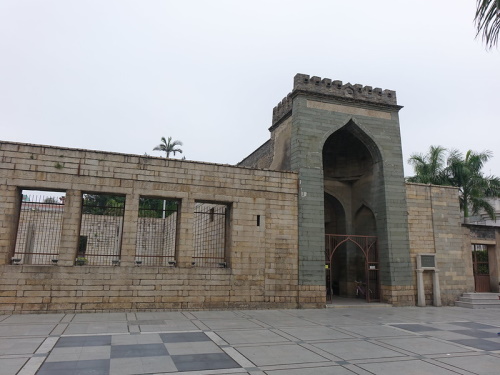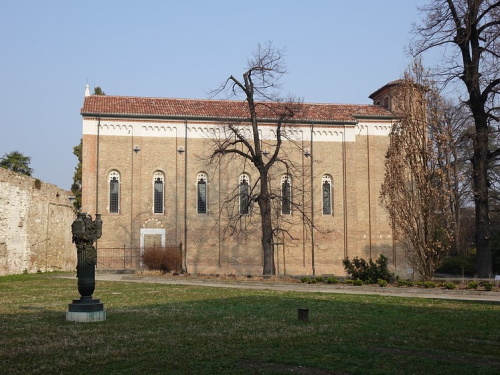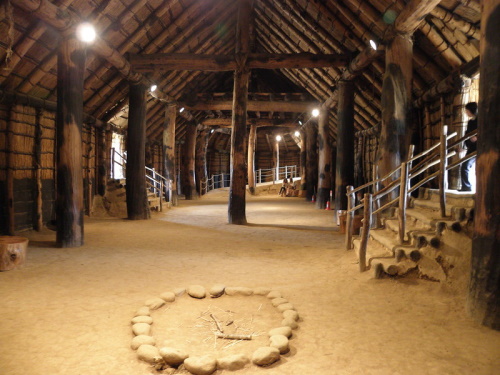Blog WHS website
The Global Strategy in 2021
The WHC meeting in the second half of July will be a special one, as the combined nominations for 2020 and 2021 will be discussed. It brings us a long list of potentials to look at. The first batch of IUCN and ICOMOS evaluations have been published last Friday. The second batch, including mostly extensions and referrals/deferrals from earlier years, will follow in a week or two.
With the lumping together of 2 years worth of nominations, it is also easier to see trends. For example, is the Global Strategy working?

What is the Global Strategy?
The Global Strategy was announced in 1994 to create a more Representative, Balanced and Credible World Heritage List.
A global study carried out by ICOMOS from 1987 to 1993 had revealed that Europe, historic towns and religious monuments, Christianity, historical periods and ‘elitist’ architecture (in contrast to vernacular) were all over-represented on the World Heritage List; whereas, all living cultures, and especially ‘traditional cultures’, were underrepresented.
As the study was done by ICOMOS, its focus was on cultural sites. However, the imbalance between cultural sites and natural/mixed sites later also became part of the problem to be solved. This strategy has evolved over the years and has become part of the Operational Guidelines. Measures taken included the limitation of only 1 nomination per country per year and the allowing of only 35 nominations in total (with prioritization done on criteria to create at least a geographical balance). There's also the Upstream Process to help "challenging nominations" forward.
The 2020/2021 nominations
I made yet another spreadsheet where I marked the 48 nominations of 2020/2021 against the following Global Strategy criteria:
1. Europe vs the rest of the world
European nominations still are good for 50% of all proposals (this was 54% in 1994). No “new” countries (countries without a WHS) have a nomination. Only Cameroon, Georgia and the Dominican Republic haven’t had anything inscribed during the past 20 years and will try now again. 10 countries (including the 4 of the Lake Chad proposal) have less than 4 sites already inscribed and would have received preferential treatment. However, both 2020 and 2021 saw less than 35 nominations so the priority ranking did not come into effect.
Especially European countries have found their way out of the 1 nomination per country limit per year. Germany in this session will have 5 and Italy 4 because of their participation in transnational nominations lead by a different state.
2. Historic towns and (Christian) religious buildings.
The archetypical WHS of the past was a European historic city with a gothic cathedral at its center. We hardly see any of them this year: there is Padua’s Scrovegni Chapel, Ribeira Sacra, the Coptic monasteries and the extension of the Popocatepl monasteries as purely Christian sites. City centers (parts of them) include Nice, Bologna and Ljubljana.

3. Historical periods vs. prehistory and the 20th century
In this category the biggest change may have occurred. The proposals include 7 sites built in the 20th century, including the modern architecture of the Sitio Roberto Burle Marx, Plecnik’s Ljubljana and the Atlantida Church of Eladio Dieste.
4. "Elitist" vs. vernacular architecture and traditional living cultures
I struggled a bit with applying "elitist architecture" - castles, villas, public buildings for sure, but how "elitist" was the Limes? I put it with all the other military architecture under "elitist" as it was state sponsored. The number of traditional living culture sites in this group of nominations is very low, I only counted 2 of them (Lake Chad and Iran's Hawraman/Uramanat).
5. More balance between nature and culture
In 1994, 29% of the nominations were mixed or natural. In 2020/2021 this percentage is only 19%.
So is the 2020/2021 batch more Representative & Balanced?
The “best” nominations measured against the criteria above are Gabon's Ivindo NP, Kaeng Krachan Forest and the Lake Chad cultural landscape. Regarding the last one we already got the news that it has not been evaluated due to security reasons, so it will not be inscribed this year.
The most progress has been made in the "period" criterion: a significant part of the nominations are either very old (8) or date from the 20th century (7).
The Upstream Process seems to have had little effect: only the 2 Slovenian sites went (partly) through it according to the AB evaluations, and even then the Classical Karst in the end got a Negative advice from IUCN regarding inscription.
In comparison to 27(!) years ago when the Global Strategy movement started, I think only baby steps forward have been made. An additional measure could be to apply the limit of 1 nomination also to transnational sites a country participates in. It doesn't help others when ICOMOS gets flooded with work regarding 5 German nominations. Also, I think there is a fundamental weakness in the WH system that allows only State Parties to nominate their own sites. Why not let a State Party (or a group of them) nominate a site elsewhere? Or why not let a NGO put a site forward?

And what about Credibility?
Credibility was the third pillar of reform. In the 2020/2021 document set you can find the Reports of the Advisory Bodies, and this statement of IUCN which is in there sums it all up nicely: “IUCN expresses its continued and increasing concern regarding the Committee’s tendency to deviate from the technical advice of the Advisory Bodies. At the 43rd session some 83.7% of Advisory Body recommendations were modified by the Committee, mostly to push decisions to be more favourable for nominations and less rigorous on conservation commitments. Furthermore, the Committee, as happened twice at the 42nd session, again amended a recommendation for non-inscription to inscription. IUCN continues to believe this sets a concerning trend which unchecked threatens to undermine the credibility of the Convention.”
Els - 6 June 2021
Comments
Nan 7 June 2021
Never thought about it that way...
* First, you bundle mediocre sites together to create sth akin to OUV.
* Then, you extend the site to include even lesser sites who wouldn't have made it on their own.
* Last but not least, when the site gets too big, you split it off and create Limes 2 and 3...
I am a bit saddened about the inflation taking place. The list should be about great and important sites. And not each and every Roman ruin running from the UK to Mesopotamia.
Els Slots 7 June 2021
What annoys me especially with the Limes (and also with the Beech forests) is that a precedent has been set after accepting the first extension, and now every single one remaining thing can be added. The Lower German Limes consists of 106 serial locations. Every single one of them should show/attribute to the OUV, I cannot imagine that they do.
Nan 7 June 2021
Being German I should be proud of this year's massive haul. But I really am not as the quality of sites we keep pushing is just too low on on average. Combining 2020 and 2021 only makes the problem of the inscription process more massive.
In total it's 5: Limes North West (Limes 2), Limes Danube (= Limes 3), European Baths, Mathildenhöhe and Shum.
* 3 of those are multinational so don't count against the limit.
* The Limes one feel redundant. I am hard pressed to see how Xanten is different from Mainz and why it deserves a separate inscription.
* Mathildenhöhe seems the lesser site in comparison to Vienna.
* ShuM .. Speyer could have been enlarged to encompass the Jewish ruins. It's ruins and cemetery primarily, so not sure if Jewish central Europe traditions aren't better represented by the Czech sites (Trebic, Prague).
Limes 2 and 3 are just redundant at this point. The best site should have been inscribed and that is Hadrian's wall in the UK.
It's not really a world heritage list if it boils down to European heritage sites primarily. I think additional revisions are needed:
* Limit inscriptions to a max number per year. 20 (?)
* Prioritize inscriptions to underrepresented countries.
* Require for each new European subscription support and funding for a non European one.
I may get to the point where I will simply freeze the list (e.g. 2010) and only focus on the subset of sites I consider relevant going forward for my travel plans. This whack a mole game with mediocre (or worse) sites is just plain annoying.
Assif 6 June 2021
Thank you, Els, for this important summary. I wholeheartedly agree that the Global Strategy has led to very little progress in over 20 years. I wonder how sincere the committee's efforts are to change the current power relations as they are reflected by the WHS list.
